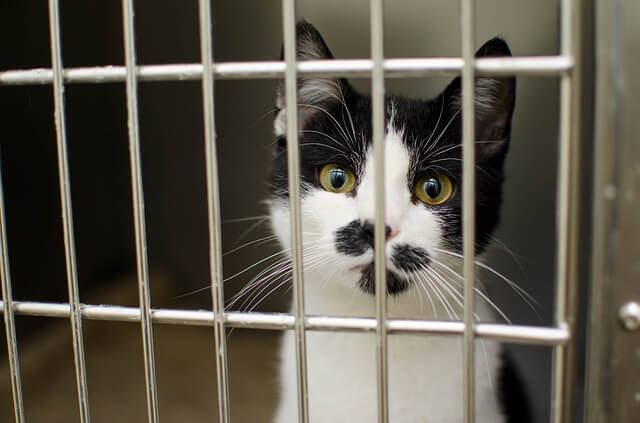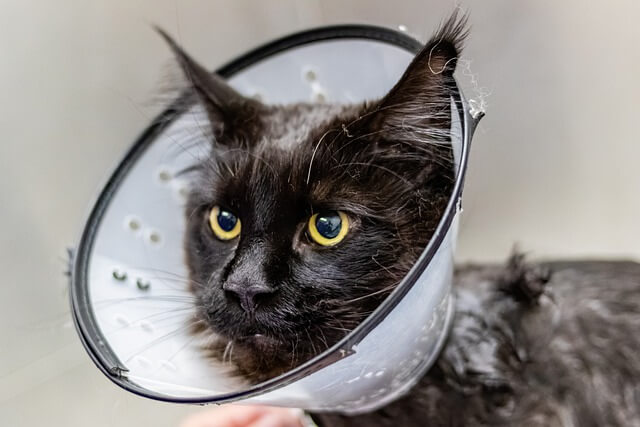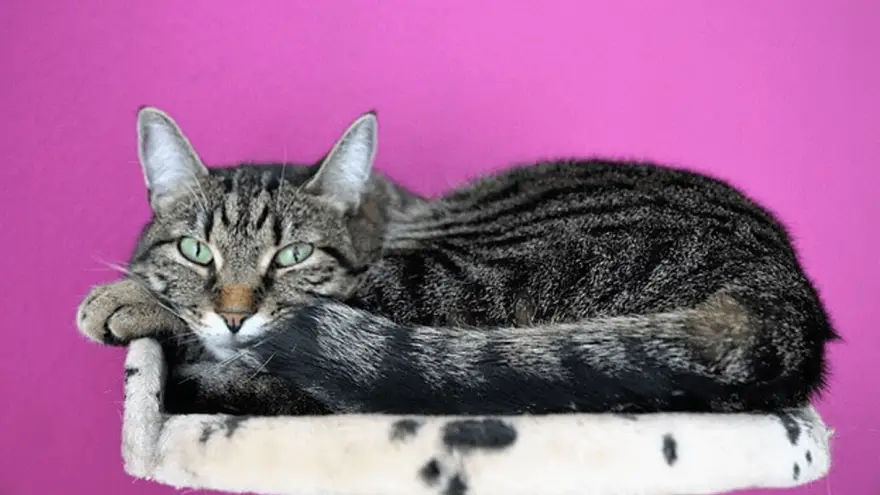Feline Leukemia Virus (FeLV): Information, Spreading & Treatment
02.04.2022.
As responsible cat owners, our biggest wish is to keep our feline companions as healthy as possible. That means we have to take proper care of them, which includes making sure they are safe from various diseases. One of those terrible diseases cat owners never want to hear about is the feline leukemia virus or FeLV. If you want to know more about it, World Cat Finder brings you the most important things about the feline leukemia virus.
What exactly is the feline leukemia virus (FeLV)?
Feline leukemia virus (FeLV) is a deadly cat-infecting virus. It was initially uncovered in cats suffering from a specific type of leukemia (white blood cells cancer). In addition to leukemia, FeLV can be a culprit for various other conditions. FeLV is a microscopic organism that multiplies within the living cat body cells. FeLV affects only cats and is harmless for other species.
RELATED: Diabetes in Cats: Symptoms, Treatment & Monitoring
How widespread is FeLV?
The feline leukemia virus is present all over the world. It is accepted that 1-2 percent of all cats are chronically infected with this virus, and a lot more of them are exposed. The exact number of FeLV-infected cats varies depending on the cat's location, immediate environment, and the type of life the leads. Similar to human infections, FeLV is more common in areas where individual cats are in direct contact.
What diseases can this virus cause?
Infection with FeLV can cause various health problems for a cat's immune and blood-forming systems. When a foreign substance enters a living cell, it can either kill the cell or alter its genetic code. The cell may become malignant as a result of this mutation, but it may take months or years for the cell to go through this process.

FeLV has the potential to cause cancer in a wide range of tissues, organs, and physical locations. Any sort of white blood cell or other blood-forming tissue cells can be affected by these malignancies. When it comes to feline leukemia virus (FELV)-associated tumors, the most prevalent is lymphoma or lymphosarcoma, a cancer of lymphoid cells. It is possible for these tumors to spread to several parts of the body simultaneously.
RELATED: What Does Blood in Cat Urine Mean? Should I Be Worried?
FeLV infection has been linked to cancer, but the virus is also responsible for a slew of other disorders. FeLV infection causes immune system suppression in many cats, ranging from mild to severe. Because of this, a sick cat's immune system is less able to fight off illnesses that aren't harmful to healthy cats. As the disease progresses, the health of affected cats progressively deteriorates.
FeLV-infected cats are also prone to developing anemia, which can be life-threatening (low red blood cell count). Abortion, severe enteritis, neurological disease, and ophthalmic disease are only a few of the complications that are frequently linked to FeLV infection.
In most cases, FeLV is lethal. FeLV-infected cats have a mortality rate of 80-90% within three to four years of their first diagnosis, according to research.
How is it spread?
FeLV is transmitted mainly through direct contact between cats. The virus is delicate and will die within a few hours if it doesn’t infect a cat. FeLV-infected cats secrete vast amounts of virus in their saliva and other physiological fluids such as nasal secretions, urine, and feces. As a result, the transmission of FeLV usually necessitates extended contact between infected and susceptible cats.
RELATED: Stomatitis in Cats: Causes, Symptoms & Treatment
Mating, mutual grooming, and sharing of litter trays and food bowls are all examples of close contact behavior. Infected cats that bite healthy cats can easily result in spreading the disease.

FeLV-infected newborn kittens are another possible source of infection. Depending on the mother's behavior, the kittens may be infected with the FeLV virus during birth or, more commonly, when she is grooming them. FeLV-infected mothers are usually sterile, or the kittens die prenatally.
When a cat gets infected with FeLV, what happens?
FeLV infections do not occur in every cat exposed to the virus. Cats afflicted with the feline leukemia virus respond to the virus, and roughly 30% of these cats can completely rid themselves of the virus. As long as these cats are infected, the virus is still present in their bodies, which might cause long-term health problems.
RELATED: What Does Blood in Cat Stool Mean?
70% of cats cannot build an adequate immune response and eradicate the pathogen. Following FeLV infection, these cats are infected with the virus for life. They are at the most significant risk of acquiring FeLV-related illnesses. FeLV is transmitted mainly by cats that have been infected with FeLV for an extended period of time. In other cases, it may take months or even years for the symptoms of a viral infection to become apparent. During this time, the cat's saliva may contain viral particles.
How do vets diagnose FeLV?
FeLV infection can be diagnosed with a blood test. When a cat is afflicted with feline leukemia, a quick blood test can be used to detect the virus's components in the blood. Inconclusive or misleading results are rare, and this test is considered quite accurate and dependable. There will be positive results on the initial blood test for cats who only have a temporary FeLV infection. A second test may be necessary to distinguish between a transient and persistent infection. Additional blood testing at a specialized laboratory may be required to confirm the presence of the virus in some cases.
RELATED: Pancreatitis in Cats: Causes, Symptoms & Treatment
Because of the wide range of symptoms and indicators, diagnosing an illness caused by FeLV is more complicated. In many cases, the FeLV infection is accompanied by several other illnesses or ailments.
Is FeLV treatable?
Vets and veterinary researchers haven’t developed a specific treatment for FeLV-infected cats yet. There is no way to get rid of the infection from your cat’s system. In most cases, feline leukemia virus-infected cats will either die or be put down due to the complications caused by the infection itself. FeLV-related illness in many cats can be alleviated by symptomatic treatment for a short time. FeLV-caused immunosuppression may lead to secondary infections that can be treated, resulting in clinical improvement in those patients with this condition.
Is prevention possible?
Cats can be protected from FeLV infection through vaccination. Anyone with an adult cat who goes outside and may encounter FeLV-infected cats should get their cat vaccinated against FeLV. A two-injection course is required, and regular boosters are needed to maintain protection. Your veterinarian will talk to you about your cat's vaccine schedule. All kittens, regardless of lifestyle, should be vaccinated against FeLV, and all cats should be screened for it before they go through the immunization process.
RELATED: Hyperthyroidism in Cats: Causes, Symptoms & Treatment
Even though immunization is quite beneficial in reducing FeLV infections, no vaccine is entirely effective. Keep your cat contained at all times. As far as you can, keep your kitten away from known FeLV-infected cats and cats without a documented history of adequate vaccinations.
Routine FeLV testing, quarantine, and vaccination programs can all be used to reduce FeLV infection in big cat colonies. Vaccination of a cat doesn’t, luckily, interfere with subsequent FeLV blood testing.
World Cat Finder Team







Share